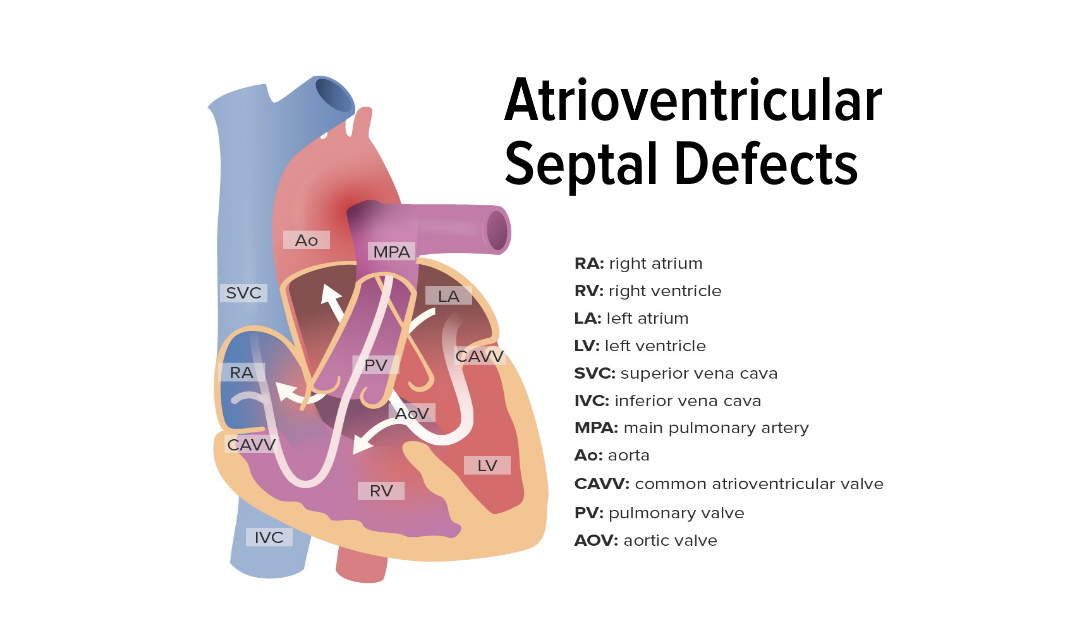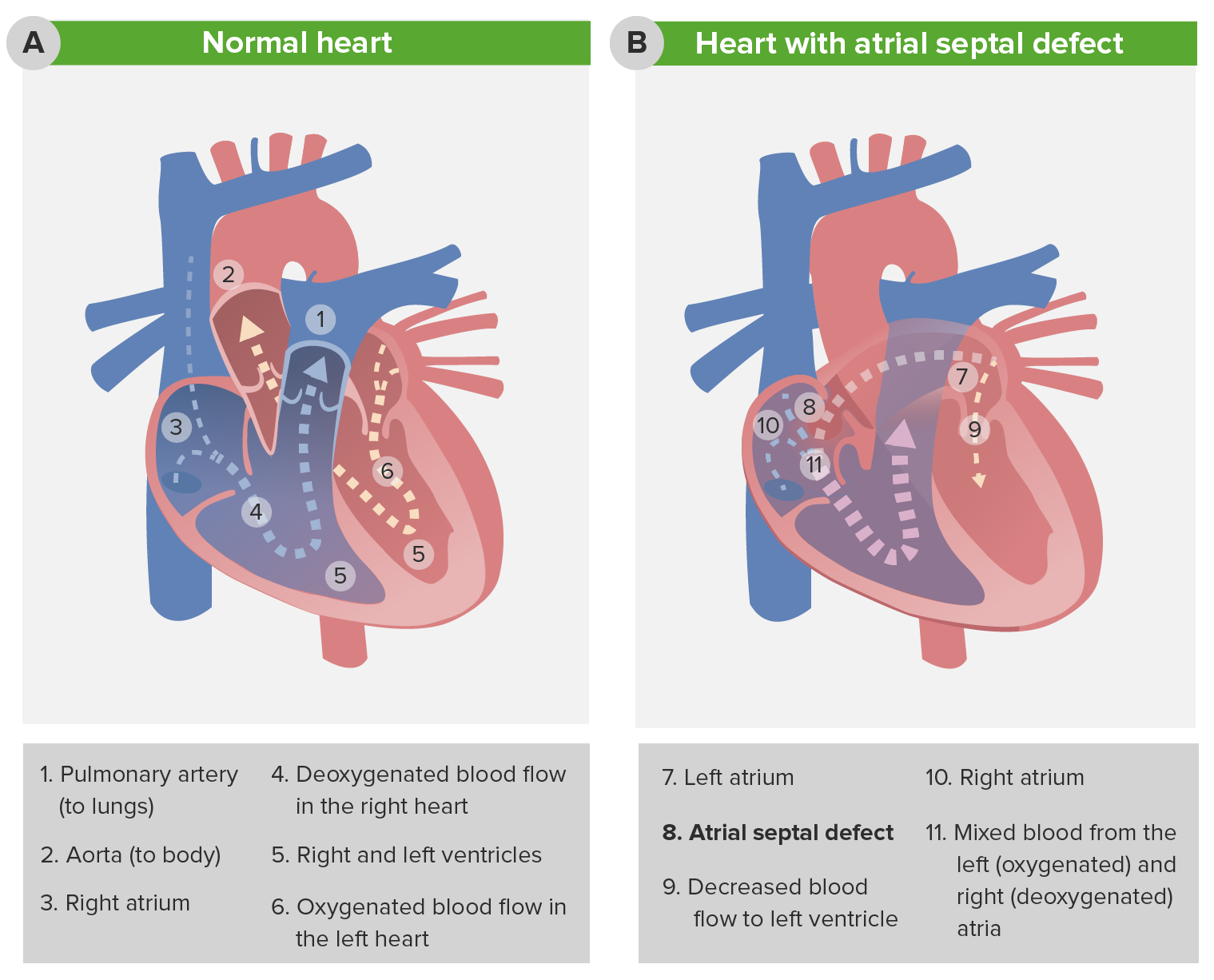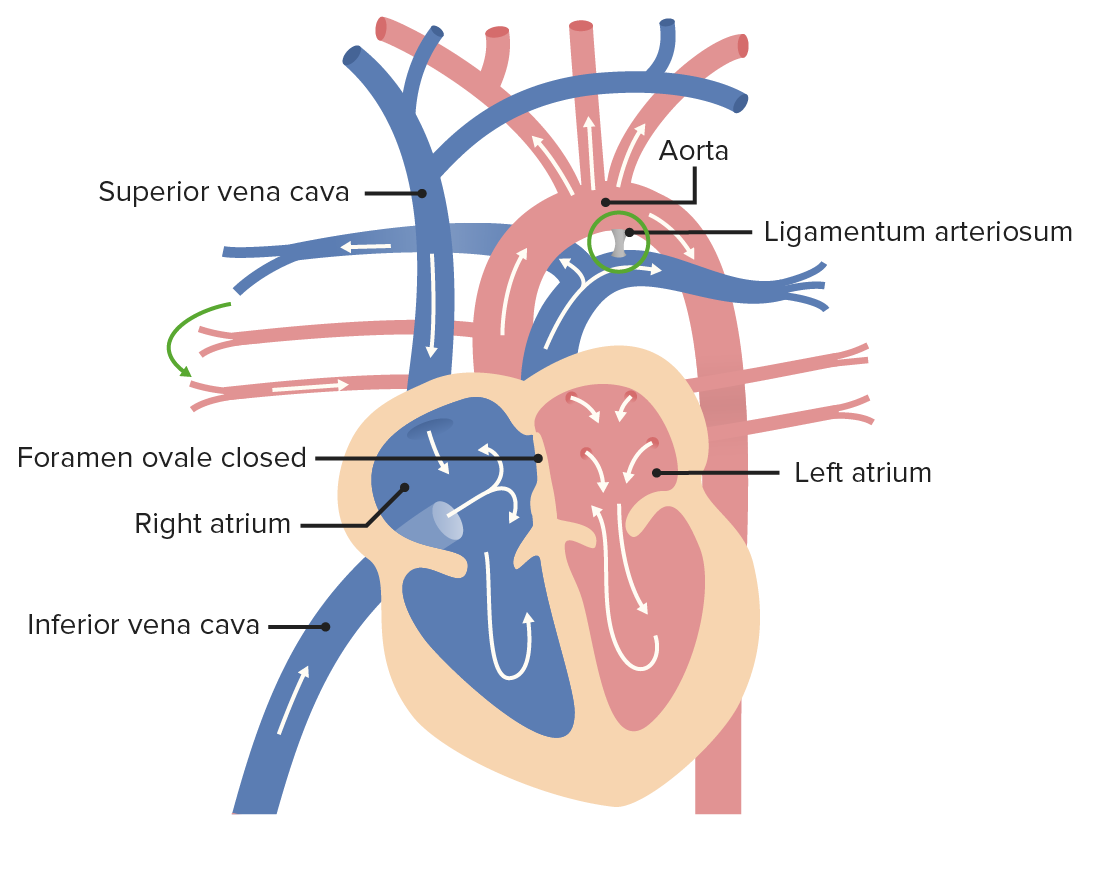Playlist
Show Playlist
Hide Playlist
Atrial Septal Defects
-
Slides 06-29 Formation of the Right and Left Atria.pdf
-
Download Lecture Overview
00:01 What can go wrong? Well, we can have a variety of atrial septal defects. 00:06 The most common is going to be a too broad ostium secundum. 00:12 The ostium secundum is too big and therefore remains open. 00:17 It can't be covered by the septum secundum as it grows in. 00:21 Next most common is an ostium primum defect where the ostium primum doesn't completely seal shut at the base of the atria. 00:30 And least common are sinus venosus atrial septal defects. 00:35 These are little holes at the point where the superior or inferior vena cava enter the right atrium. 00:41 Now atrial septal defects do create turbulence and therefore you're gonna hear a wide fixed split S2 murmur with this atrial septal defects. 00:52 Very small defects, however, may be asymptomatic or have a very, very subtle murmur so do get some practice on detecting those murmurs when you're working through your clinical skills and auscultation. 01:04 Now, another defect that can occur is a patent foramen ovale where the valve of the foramen ovale does not completely shut up against the septum secundum and we have a little bit of potential blood flow between right and left atria. 01:21 It's frequently asymptomatic because increased pressure on the left side of the heart keeps it pressed against the septum secundum, but if I have increased pressure on the right side of my heart for example, as board exam question writers love to say, 'I've gone scuba diving', 'I go scuba diving', all that water pressures pushing on my limbs and increase in the blood pressure going to my heart. 01:44 That increased right sided pressure can reopen the foramen ovale and cause a shunt of blood from the right to the left. 01:54 And the other favorite thing that board review or board exam writers like to do is say that therefore I can have a stroke because the deep venous thrombosis goes to my right atrium and instead of going to the right ventricle and lungs causing a pulmonary embolism, at that point it can travel to my right atrium, left atrium, left ventricle, up into my arterial system and wind up in my head. 02:19 So common' although common board question for an uncommon clinical anomaly but that can happen when you have a patent foramen ovale. 02:29 Now the patent foramen ovale, let's put a picture with it. 02:33 On the left we got two pictures depicting the typical appearance. 02:37 There's a narrow little thin membrane between the left and right atria called the fossa ovalis or oval fossa. 02:46 It's a little thin area that can usually be felt very easily between the two atria, but if the valve of the foramen ovale does not completely shut you can have a slightly open or probe patent foramen ovale. 02:59 Now what that means is you can stick a probe through it but it doesn't have an appreciable shunt associated with it. 03:05 However, very wide or very large patent foramen ovale can cause shunts and some kind of murmur that you'll detect similar to an atrial septal defect. 03:16 Thank you very much for your attention and I hope that I clarified things just a bit.
About the Lecture
The lecture Atrial Septal Defects by Peter Ward, PhD is from the course Development of Thoracic Region and Vasculature.
Included Quiz Questions
What is the most common site of atrial septal defects?
- Mid portion
- Upper portion
- Lower portion
- Junction of right atrium and vena cava
- Anterior portion
Under what conditions can the foramen ovale reopen?
- Increased right heart pressure
- Increased left heart pressure
- Decreased venous return
- Increased cardiac output
- Left ventricular hypertrophy
Customer reviews
5,0 of 5 stars
| 5 Stars |
|
1 |
| 4 Stars |
|
0 |
| 3 Stars |
|
0 |
| 2 Stars |
|
0 |
| 1 Star |
|
0 |
good good good good good good good good good good good goodfg







